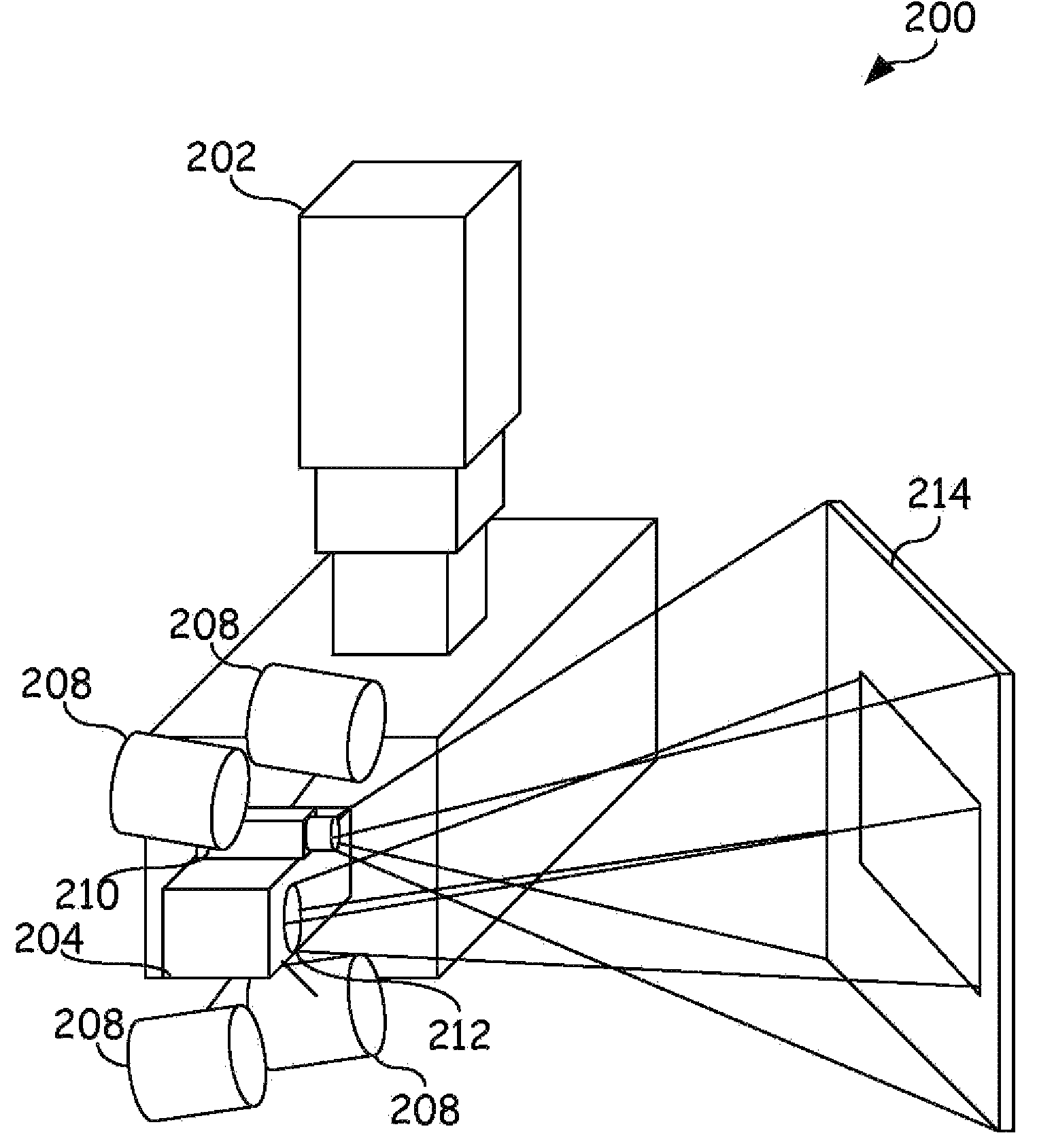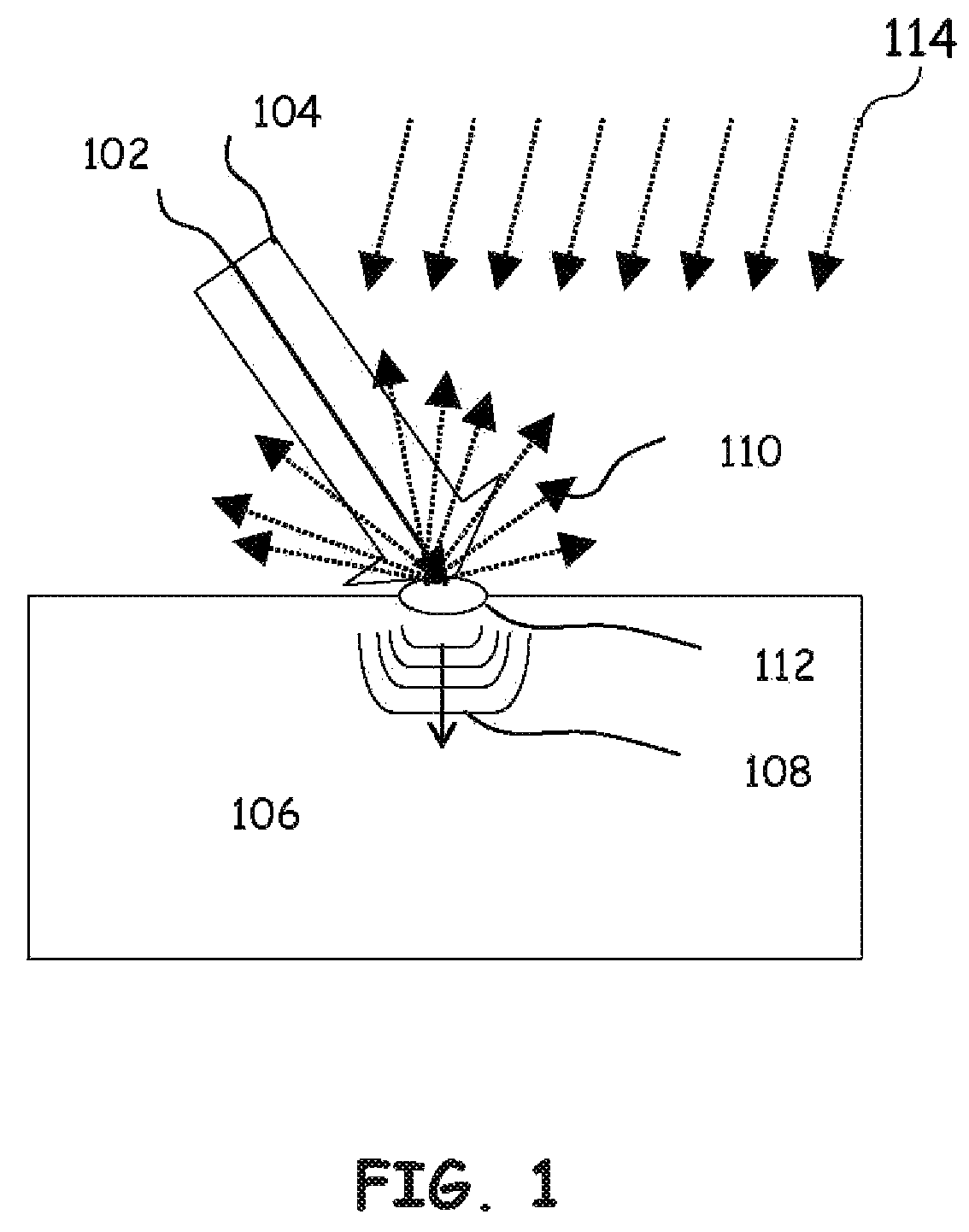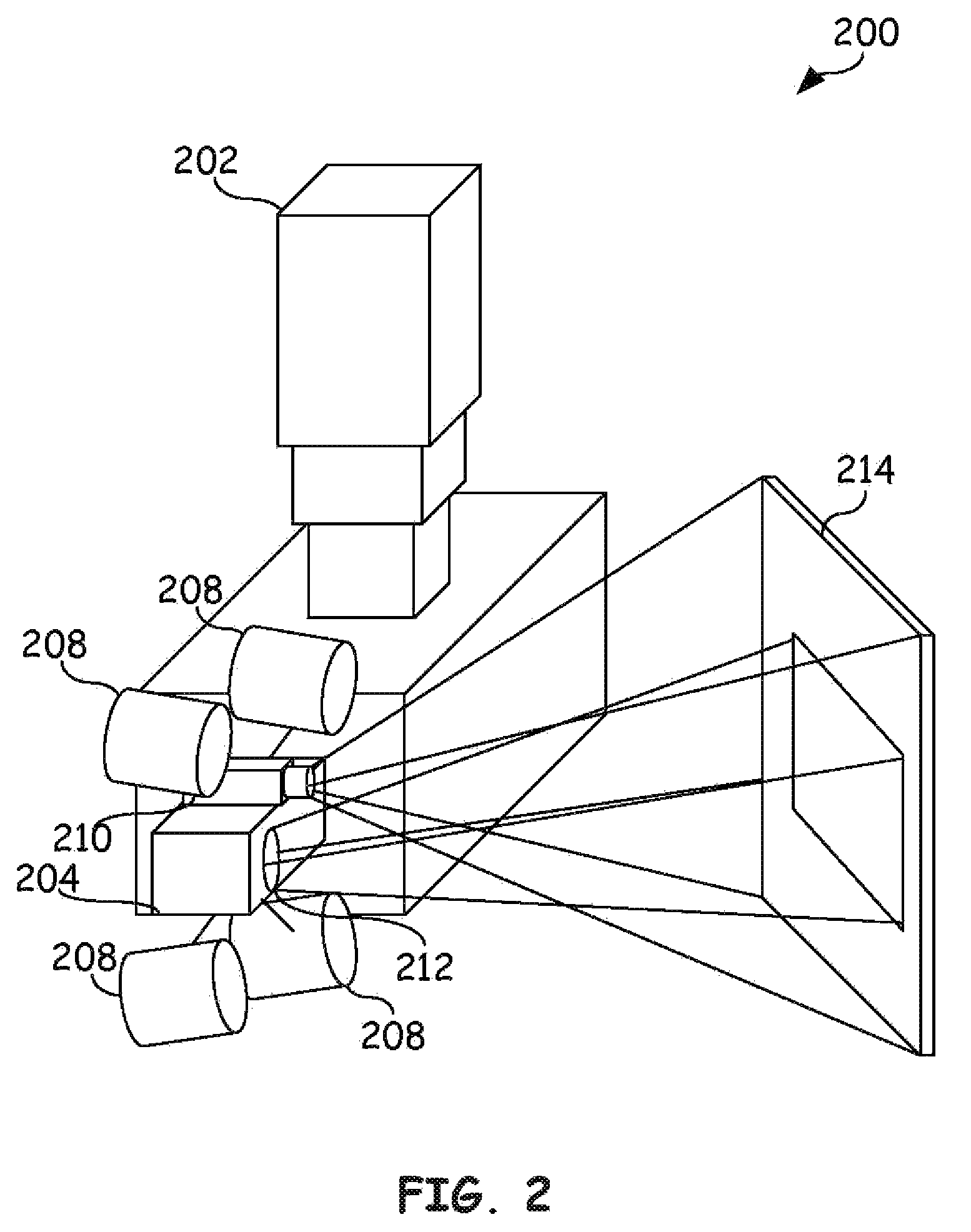Laser-ultrasound inspection using infrared thermography
a technology of infrared thermography and ultrasonic testing, which is applied in the field of non-destructive testing, can solve the problems of nde method, ineffective inspection of polymer-matrix composites, and strict quality control procedures, and achieve the effect of complete understanding and better understanding of the overall internal structure of the targ
- Summary
- Abstract
- Description
- Claims
- Application Information
AI Technical Summary
Benefits of technology
Problems solved by technology
Method used
Image
Examples
Embodiment Construction
[0020]Preferred embodiments of the present invention are illustrated in the FIGURES, like numerals being used to refer to like and corresponding parts of the various drawings.
[0021]Embodiments of the present invention combine laser ultrasound and thermal imaging techniques to provide a more complete non-destructive inspection of target materials such as but not limited to polymer-matrix parts (i.e. composite materials). One embodiment provides an inspection system operable to examine internal structures of the target material. One embodiment provides an inspection system to examine near surface and deep internal structures of target material. This inspection system combines an ultrasonic inspection system and a thermographic inspection system. The thermographic inspection system is attached to ultrasonic inspection and modified to enable thermographic inspection of target materials at distances compatible with laser ultrasonic inspection. Quantitative information is obtained using d...
PUM
 Login to View More
Login to View More Abstract
Description
Claims
Application Information
 Login to View More
Login to View More - R&D
- Intellectual Property
- Life Sciences
- Materials
- Tech Scout
- Unparalleled Data Quality
- Higher Quality Content
- 60% Fewer Hallucinations
Browse by: Latest US Patents, China's latest patents, Technical Efficacy Thesaurus, Application Domain, Technology Topic, Popular Technical Reports.
© 2025 PatSnap. All rights reserved.Legal|Privacy policy|Modern Slavery Act Transparency Statement|Sitemap|About US| Contact US: help@patsnap.com



